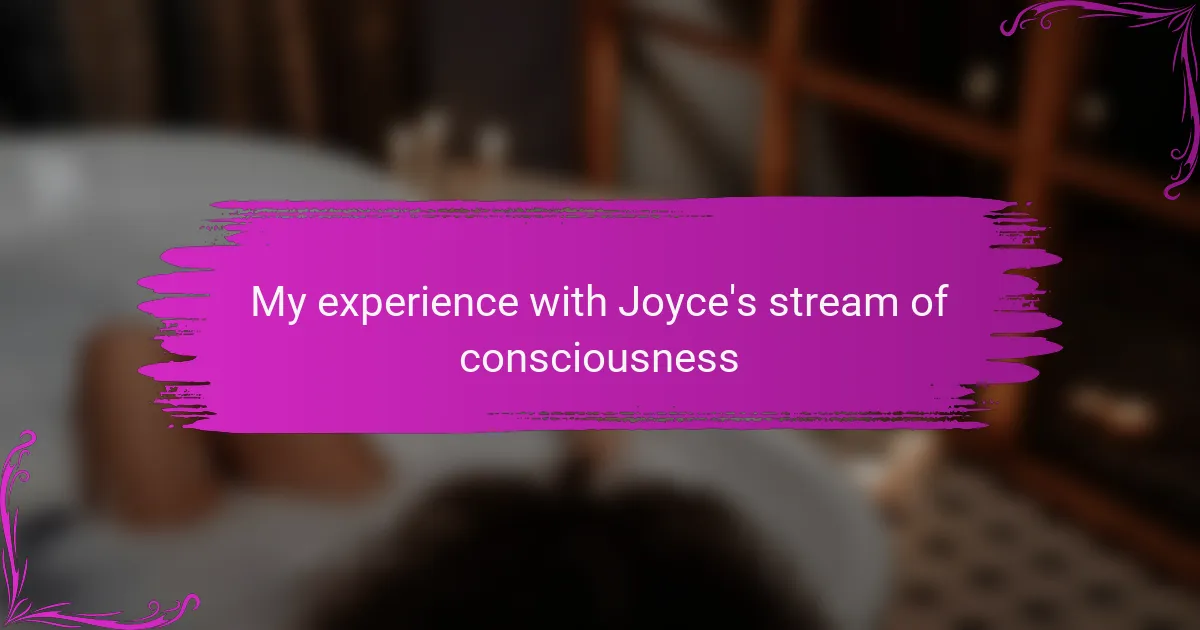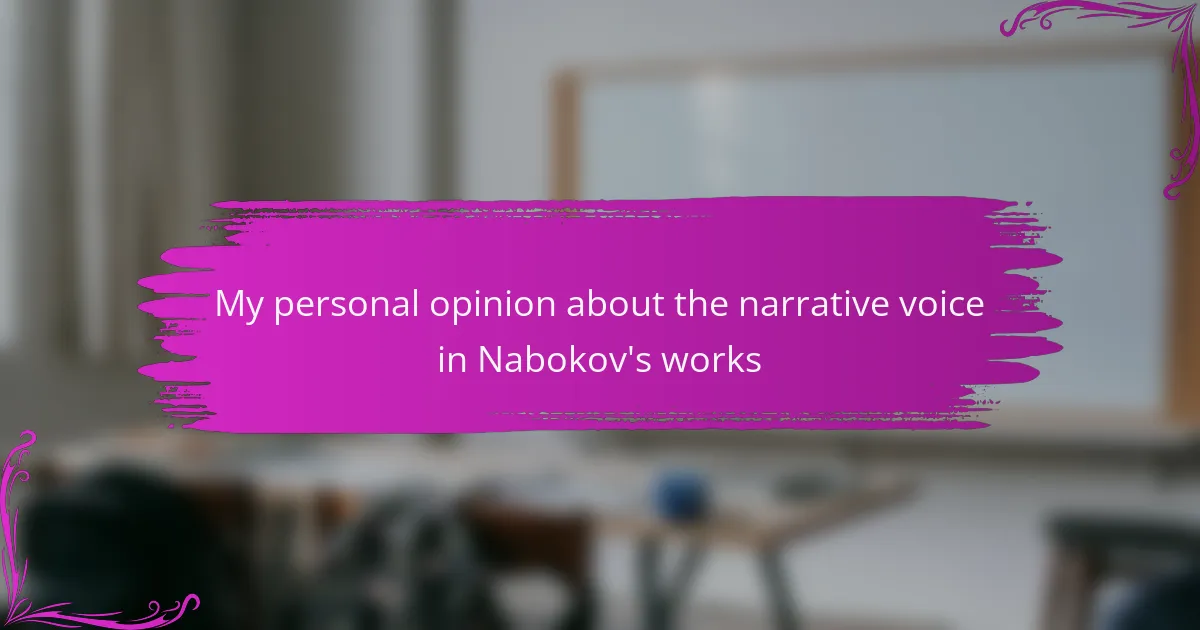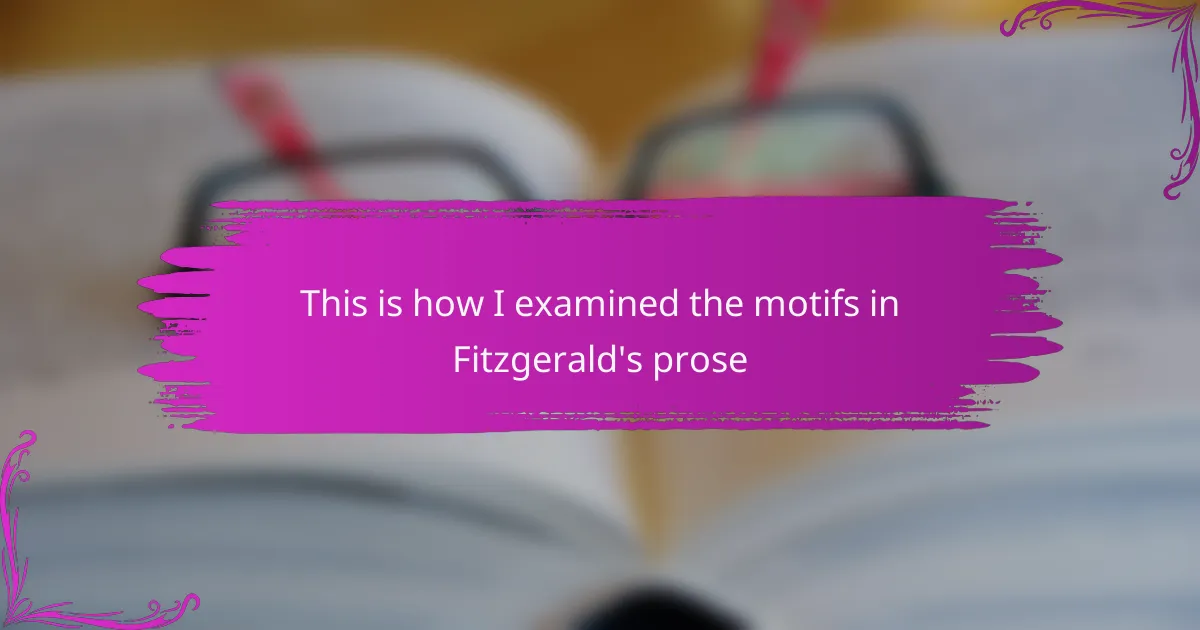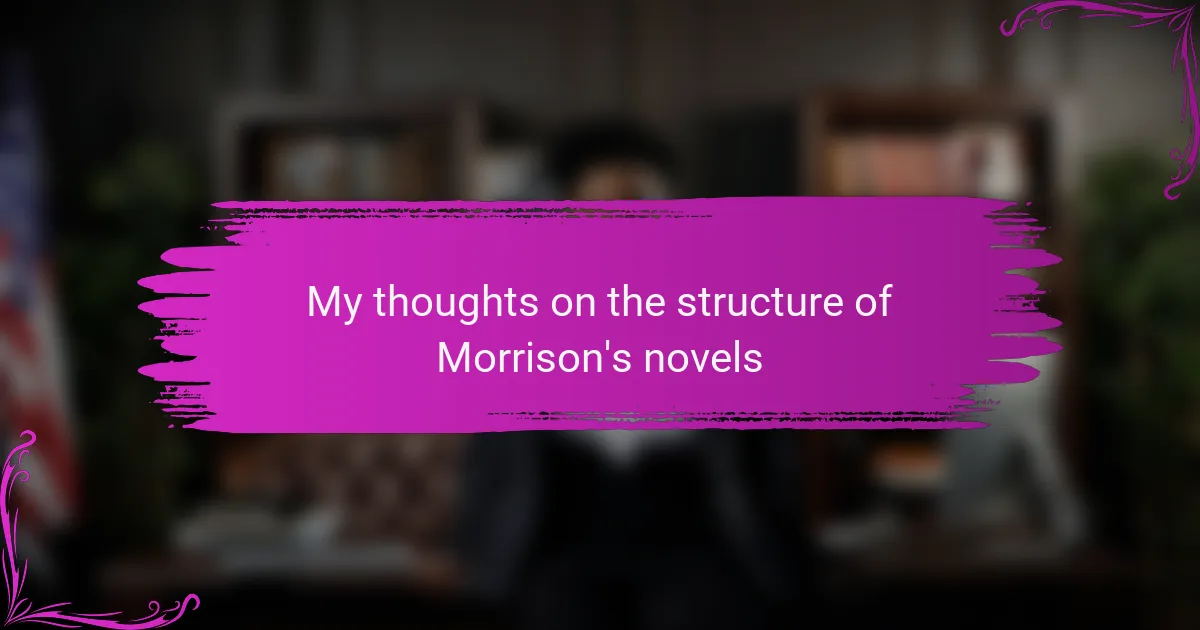Key takeaways
- Stream of consciousness invites deeper emotional connections and unique perspectives in literature, enhancing reader engagement with characters.
- Key authors like James Joyce and Virginia Woolf shaped this narrative style, using it to mirror the complexities of human thought and emotion.
- Analyzing Joyce involves techniques such as close reading, character mapping, and engaging with language, which reveal layers of meaning in his work.
- Practical writing exercises, like freewriting and character journals, can unleash creativity by allowing thoughts to flow freely, fostering a more intimate connection to characters.
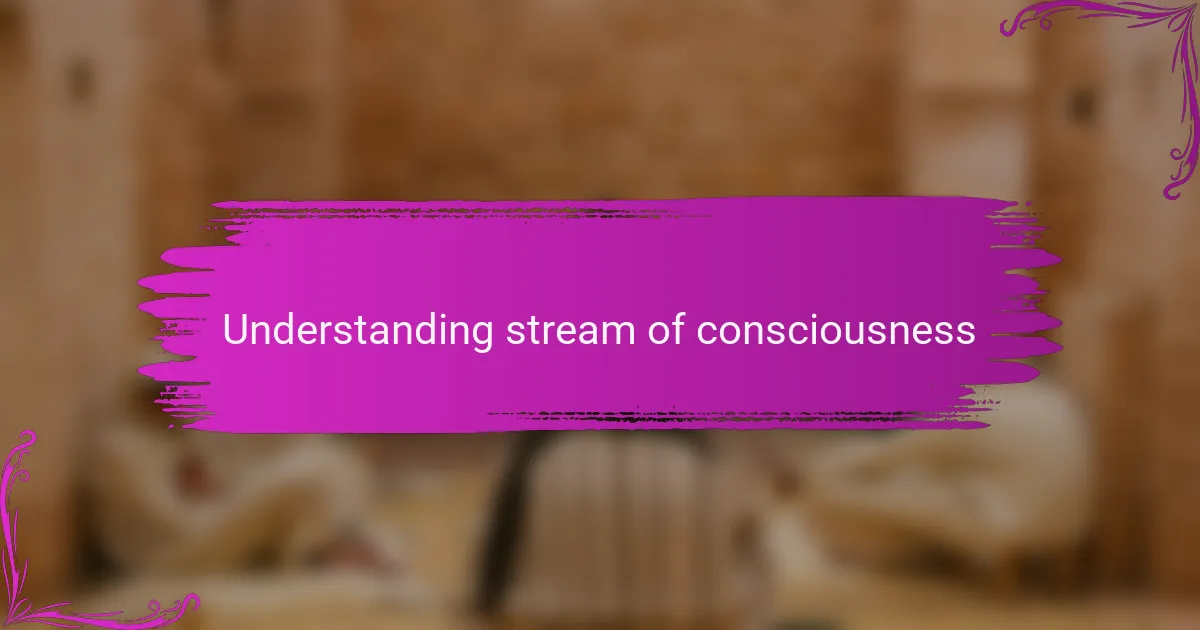
Understanding stream of consciousness
Understanding stream of consciousness is like stepping into the labyrinth of the human mind. I remember my first encounter with this narrative style in James Joyce’s “Ulysses.” It felt as if I were diving into a river of thoughts—some clear, some murky—but all undeniably compelling and raw.
What struck me most was how Joyce captures fleeting emotions and sensory experiences without the constraints of traditional structure. It was a refreshing, albeit challenging, change from more linear narratives. I found myself both frustrated and fascinated, which made it a unique reading adventure.
In exploring Joyce’s style, I realized that stream of consciousness invites readers to connect on a deeper level, engaging with characters in a way that feels remarkably intimate. I often felt like a silent observer in a private conversation, which is quite a remarkable experience in literature.
| Characteristic | Description |
|---|---|
| Narrative Style | Non-linear, flowing thoughts and feelings |
| Perspective | Often first-person, creating intimacy |
| Emotion | Captures fleeting emotions and sensory details |
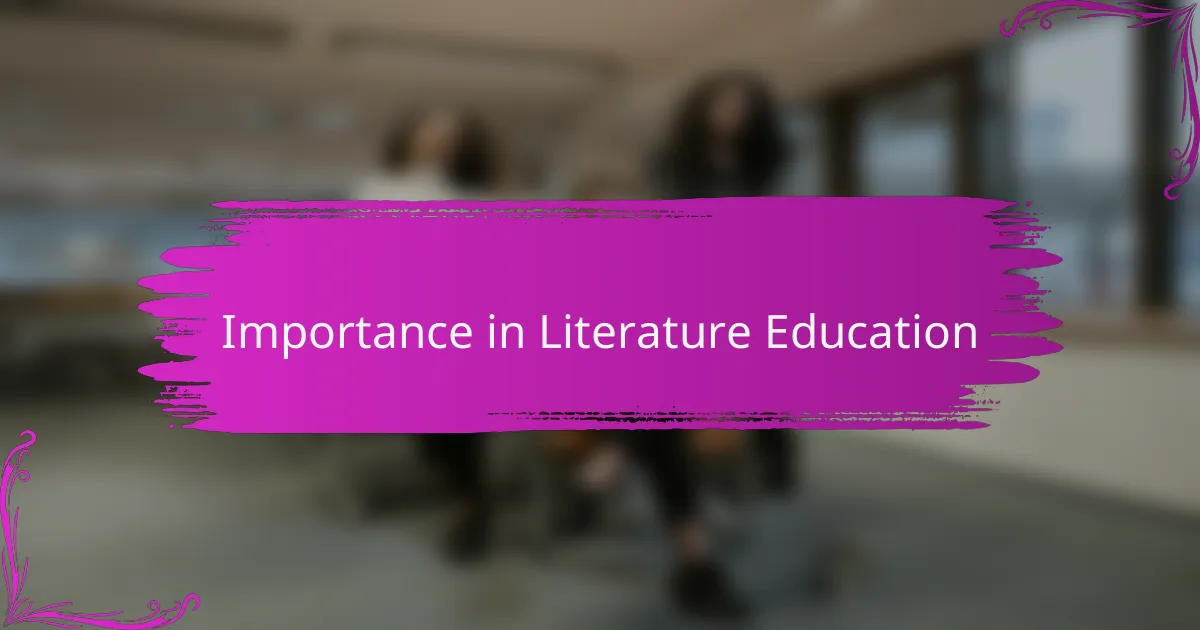
Importance in literature education
Engaging with stream of consciousness in literature education is transformative for students. I recall discussing “Ulysses” in class and watching my peers light up as they unraveled Joyce’s dense prose. The technique not only challenges conventional reading habits but also cultivates critical thinking skills, pushing students to interpret the unspoken.
This narrative style fosters a deeper emotional connection to characters and themes. When I first embarked on analyzing a character’s winding thoughts, I realized how powerful it was to see their vulnerabilities laid bare. Don’t you think that understanding these nuances can enhance our appreciation of literature as a whole?
Moreover, introducing stream of consciousness in educational settings encourages diverse perspectives. I found that students often bring their own experiences to the table, enriching discussions. How can we ignore such a profound way of exploring human nature through literature? Stream of consciousness opens doors to empathy and understanding that are invaluable in today’s society.
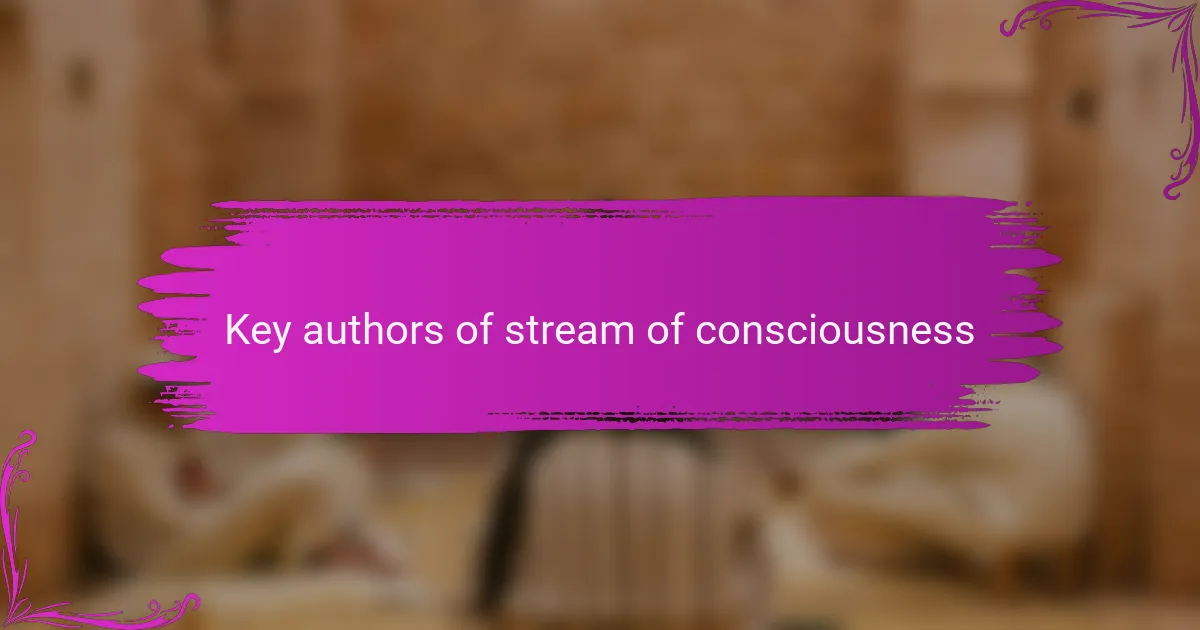
Key authors of stream of consciousness
When I think about the key authors of stream of consciousness, James Joyce inevitably comes to mind. His work in “Ulysses” exemplifies this technique, weaving intricate thoughts and perceptions that transport the reader deep into the characters’ minds. Reading Joyce was not just about following a plot; it felt as if I was peering into the very fabric of human consciousness.
Virginia Woolf is another pivotal figure in this literary movement. In her novel “Mrs. Dalloway,” she masterfully captures the characters’ inner thoughts, allowing us to experience their emotions and perceptions in real-time. I remember feeling profoundly connected to Woolf’s characters; their struggles and joys resonated with my own experiences, highlighting the universal nature of human emotion.
This table summarizes the contributions of key authors to the stream of consciousness style:
| Author | Notable Work |
|---|---|
| James Joyce | Ulysses |
| Virginia Woolf | Mrs. Dalloway |
| Marcel Proust | In Search of Lost Time |

Techniques for analyzing Joyce
When diving into Joyce’s stream of consciousness, I’ve found that one effective technique is to closely observe the narrative flow. It often helps to take a step back and see how his characters’ thoughts move in unexpected directions, mimicking real human thought. This approach has allowed me to appreciate the fluidity of his prose and the rich tapestry of emotions behind every sentence.
Another vital technique is to engage with the language itself. Joyce often plays with syntax and punctuation, creating a unique rhythm that reflects the tumultuous nature of the mind. In my experience, reading passages aloud has deepened my understanding of this musicality in his work, unveiling layers I hadn’t noticed before. It’s almost as if you can feel the characters’ internal struggles and joys resonating through your own voice.
Techniques for Analyzing Joyce:
– Close Reading: Pay attention to punctuation, word choice, and sentence structure.
– Character Mapping: Track how thoughts evolve and connect between characters.
– Reading Aloud: Listen for the rhythm and flow of Joyce’s language.
– Thematic Focus: Identify recurring themes that shape the characters’ thoughts.
– Contextual Analysis: Consider historical and biographical contexts that influence his writing.
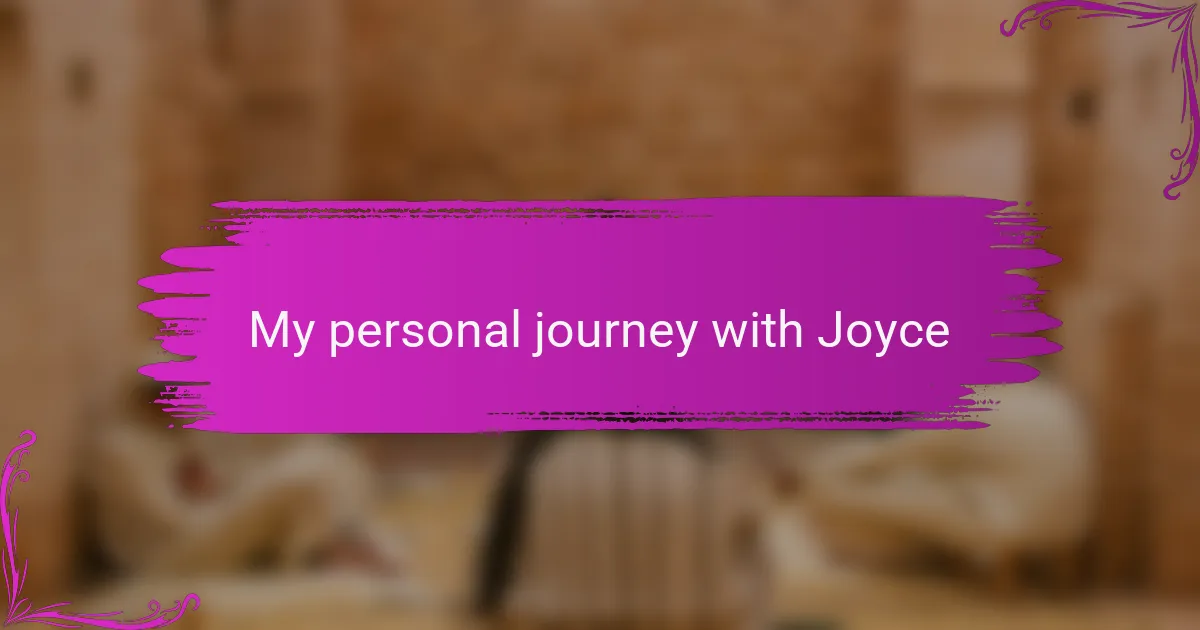
My personal journey with Joyce
My personal journey with Joyce has been both challenging and enlightening. When I first encountered his stream of consciousness technique, I felt overwhelmed by the dense prose and intricate thoughts. However, as I delved deeper into works like “Ulysses,” I began to appreciate how Joyce captures the fluidity of human thought, allowing me to experience moments of clarity amidst the chaos.
I vividly remember the first time I read Leopold Bloom’s inner thoughts during a mundane afternoon. I found myself laughing and reflecting on my own life. It was a remarkable moment; Joyce’s style transformed a simple narrative into a profound exploration of the human experience.
As I continued my journey, I realized that Joyce’s writing reflects the complexity of our emotions and ideas. His works challenge us to embrace our own stream of consciousness, making his literature a relatable exploration of what it means to be human.
| Aspect | Joyce’s Stream of Consciousness |
|---|---|
| Definition | A narrative mode that attempts to capture the flow of thoughts and feelings in a character’s mind. |
| Impact on Reader | Encourages deep engagement with characters’ inner lives, making readers contemplate their own thoughts. |

Lessons learned from Joyce’s style
Experiencing Joyce’s stream of consciousness has taught me that the flow of thoughts can mirror the complexity of real human emotions. I remember reading “Ulysses” for the first time; I was amazed at how Joyce captured the nuances of everyday life. It made me reflect on my own internal dialogues and how they shape my experiences.
One key lesson is the importance of perspective. Joyce’s characters often filter their thoughts through unique lenses, which reminds me to consider multiple viewpoints in my own life. It has encouraged me to embrace my thoughts, no matter how fragmented they may seem, as they form the essence of my personal story.
Another takeaway is the power of detail. Joyce’s keen observations of the mundane—like a passing train or the color of a wall—reinforced my belief that beauty often lies in the ordinary. This insight has fueled my appreciation for the little things that might otherwise go unnoticed.
| Joyce’s Stream of Consciousness | My Insights |
|---|---|
| Complexity of Thought | Emotions are often layered and nuanced. |
| Perspective Matters | Understanding different viewpoints enriches my life. |
| The Beauty of Detail | Ordinary moments can hold profound meaning. |

Practical applications in writing exercises
When I first delved into Joyce’s stream of consciousness technique, it challenged my conventional writing approach. I remember experimenting with it during a creative writing workshop, and the immediate freedom I felt was exhilarating. Suddenly, my thoughts flowed uninterrupted onto the page, crafting a more intimate connection with my characters and their inner lives.
Incorporating this technique into writing exercises can yield remarkable insights and improved creativity. Here are some practical applications to consider:
-
Freewriting Sessions: Set a timer for 10-15 minutes and write without censoring your thoughts. Let them tumble onto the page; don’t stop to edit.
-
Character Journals: Have your characters write their thoughts and feelings in a journal entry, allowing their voices to emerge organically.
-
Voice Exploration: Try writing a scene from multiple perspectives using stream of consciousness to capture the varied thoughts and emotions of each character.
-
Prompt-based Writing: Use prompts that require exploring a single moment from different angles, encouraging depth and fluidity in your narrative.
-
Mind Mapping: Start with a central thought or emotion and let lines of text radiate outwards, mimicking how thoughts can swiftly branch out in one’s mind.
